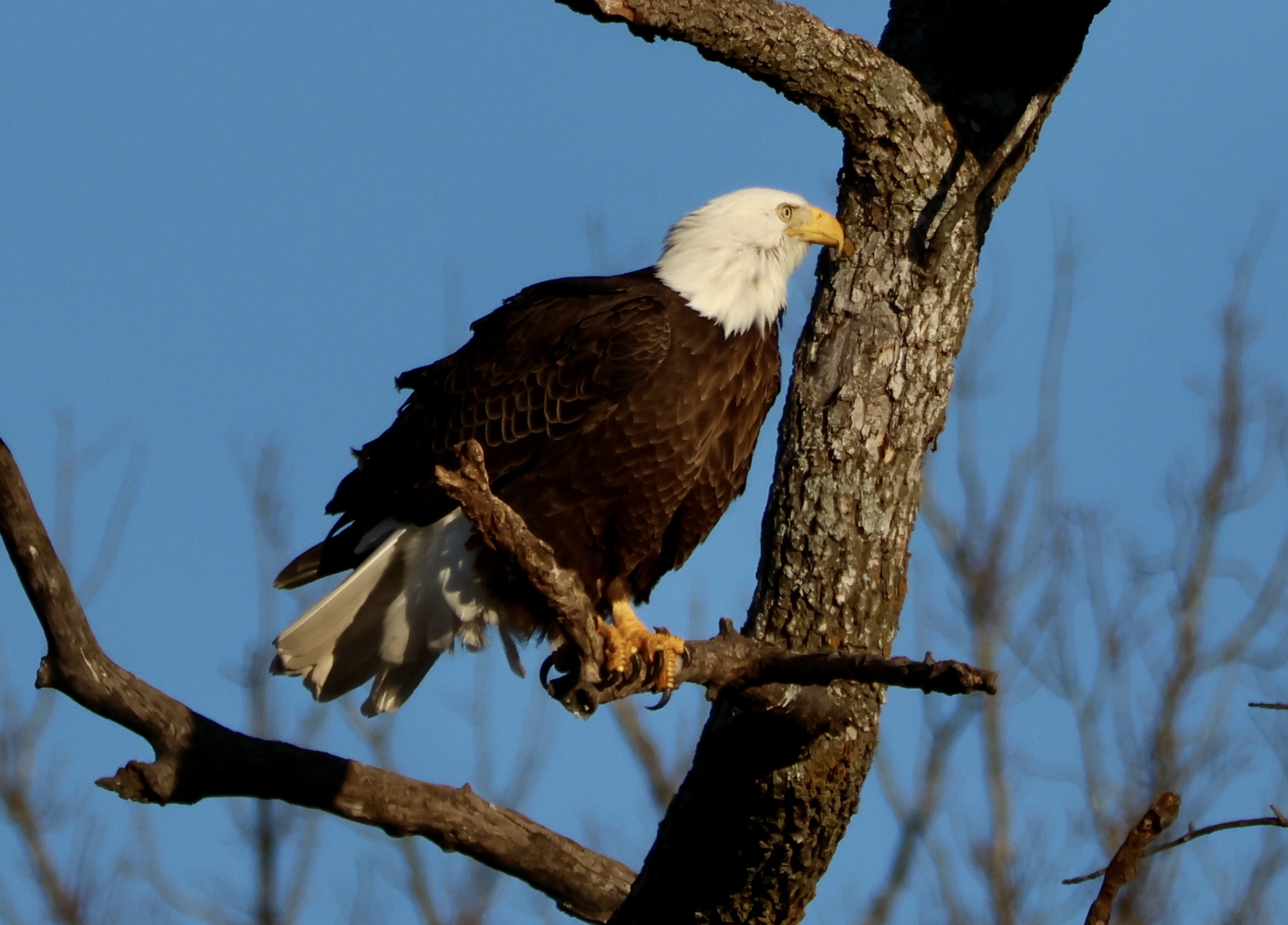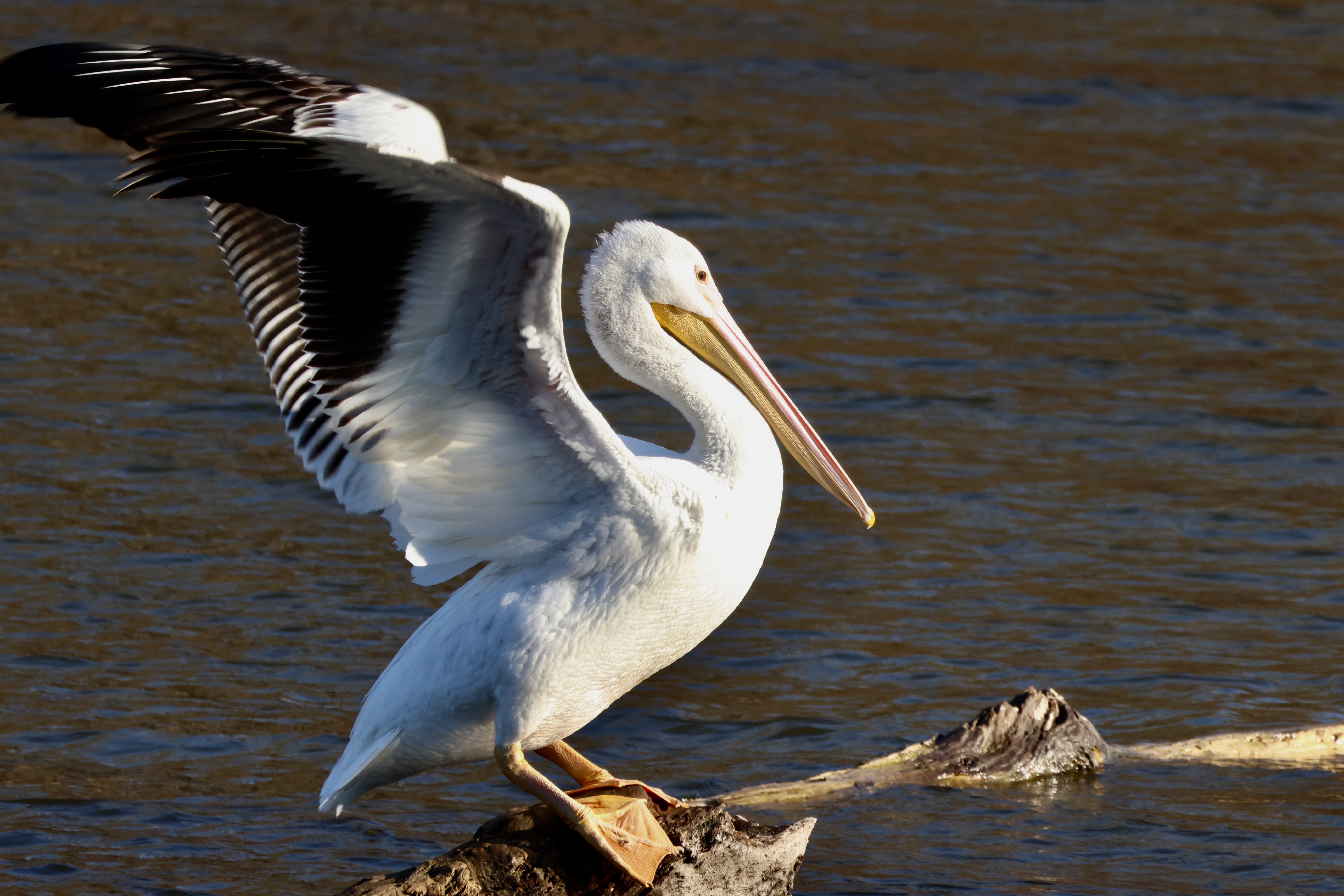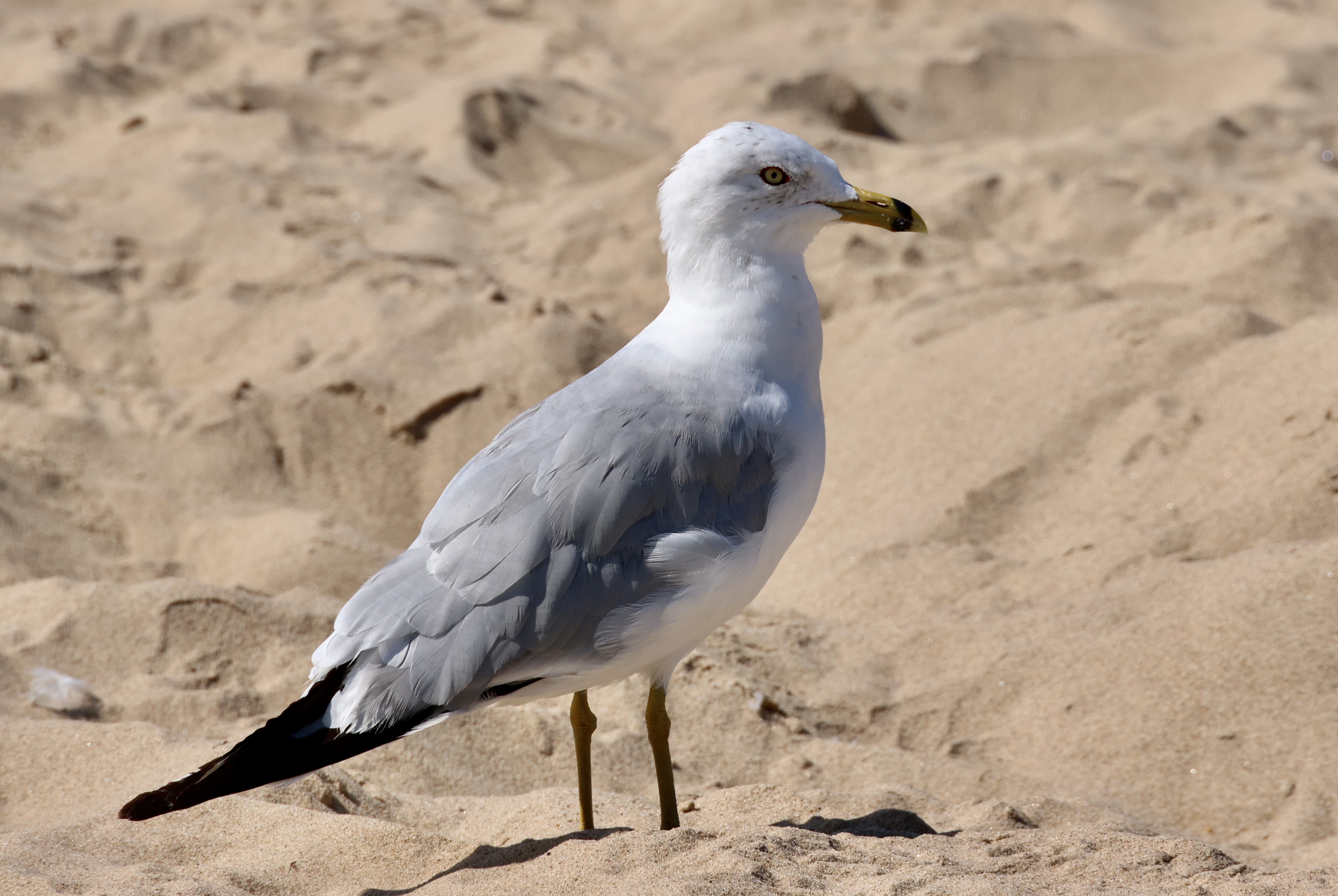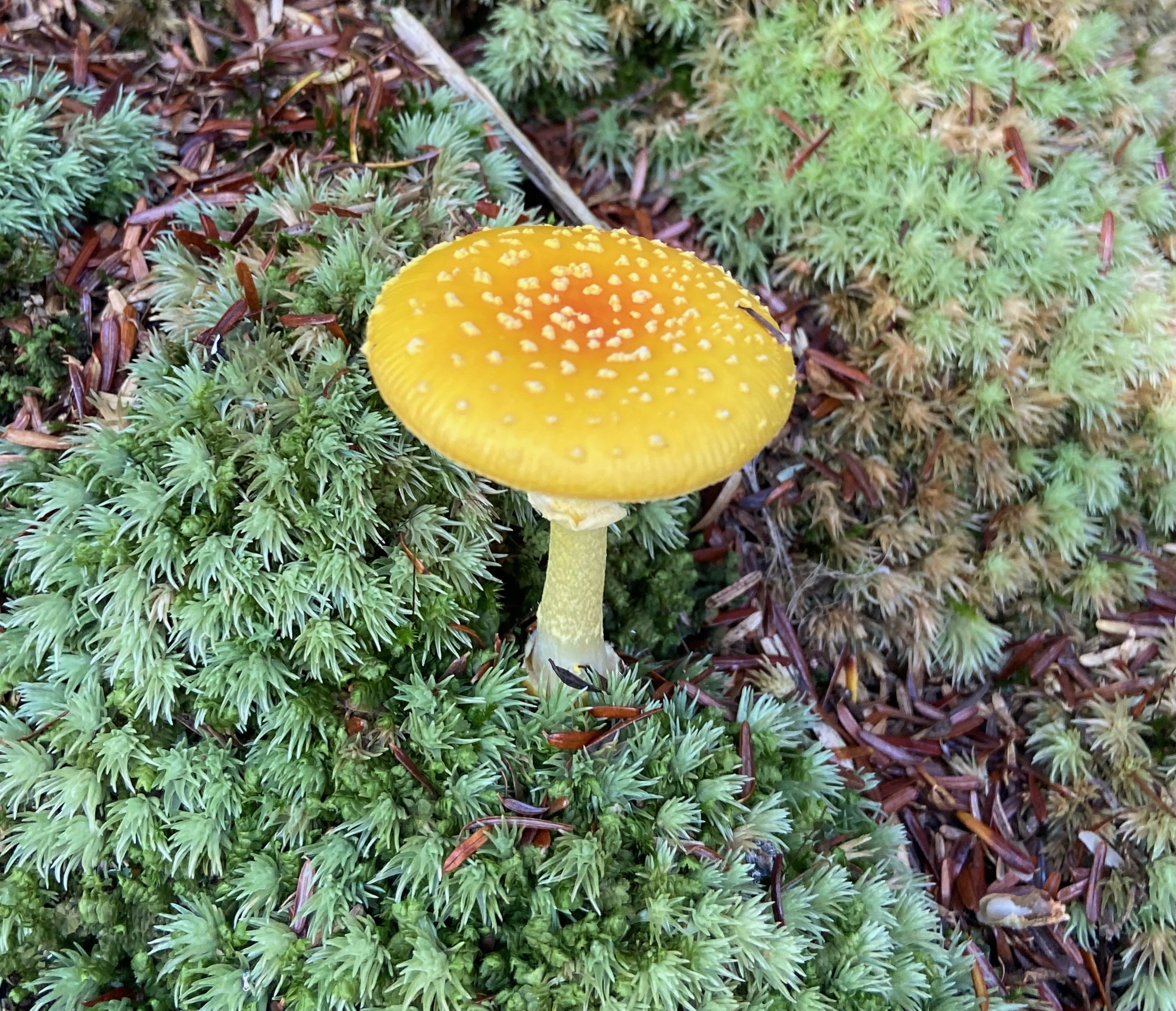A few days ago, I was driving through our neighborhood when I suddenly shrieked with joy, so loud that I was glad no one else was in the car. The cause of my excitement was a plump raccoon lumbering across the road.
I don’t normally get that excited about raccoons, but ever since I took on a new life goal my days have had unexpected moments of pleasure like this. My mission? I want to see every animal and plant listed in the Kaufman Field Guide to Nature of the Midwest.
I discovered the book while browsing the gift store at the National Eagle Center in Wabasha, Minnesota. I don’t need another guidebook, I thought, but this one looked intriguing, especially once I started flipping through its pages. Instead of being a specialized guide for birds or mushrooms or flowers, it takes a potpourri approach to nature in the Midwest. According to the introduction, the authors’ intent “has been to cover those things that people are most likely to notice, so we have exercised a bias toward the most conspicuous plants and animals.” That means no wolverines (which are exceedingly rare in the Midwest) or once-in-a-lifetime tropical birds blown off course.
Because of my work as a travel writer, I’m on the road a great deal. But lately I’ve been wanting to learn more about the region in which I live, and so the book seemed just the ticket.
To motivate myself, I’ve made it into a game. Every time I identify a plant or animal, I write the date and location in my copy of the book, next to its picture. I checked off the easy ones right away: a white-tailed deer, bald eagle, and burr oak. But then it got harder. I realized, to my embarrassment, that I didn’t know what ragweed looked like. A lot of people complain about it, especially in the fall as they sneeze away, but I didn’t recognize it. Sure enough, both giant ragweed and common ragweed are on page 88, and it didn’t take me long to find them in the wild. Check! Check!

The bald eagle was one of my first–and easiest–identifications. Photo by Bob Sessions.
As I was reading about ragweed, I happened upon a section that listed the many varieties of goldenrod (which the guidebook explained is mistakenly thought to be an allergen, but actually isn’t, at least for most people).
I’d never paid much attention to these yellow flowers before, but my nature quest changed that. One afternoon, I found myself mesmerized by a patch of goldenrod in a local park, watching as honeybees and bumblebees flitted from bloom to bloom. It struck me that I’d never truly seen these flowers until now—and suddenly, I was having practically a religious experience marveling at their radiant gold.
On a camping trip to Brunet Island State Park in Wisconsin, I had an encounter with a green heron as I was kayaking through the backwaters of the Chippewa River. It was almost as if the bird knew I was on the lookout for it, because it sat for the longest time on a log near the water, letting me admire its plumage.
I’ve had one wonderful experience after another thanks to my quest, often with the help of people much more knowledgeable than I am. When my friend Elisabeth pointed out a Mourning Cloak butterfly, for example, I was instantly charmed. With its dusky, velvet-brown wings edged in pale gold, it did indeed look like a mourning cloak, bringing to mind a Victorian widow in a Dickens novel.

My guidebook game makes me realize how much I love white pelicans. Photo by Bob Sessions.
And when a friend recently invited me to her house in rural Iowa City to watch for wildlife, I said yes enthusiastically—despite the fact it will mean waking up at 4 am to sit silently in the dark by a creek. A wildlife camera there often picks up coyotes, otters, and even the occasional bobcat, so I’m willing to sacrifice some hours of sleep in order to check off some of the Midwest’s most charismatic mammals.
Every game needs a set of rules, and here are mine:
- Roadkill doesn’t count.
- It also doesn’t count if someone else spots something and says, “Lori, look!” and I just see a blur.
- I can’t take credit for species I’ve seen in the past.
One of the surprising things I’ve learned is how much life there is all around me. In the past I’ve tended to notice mainly animals, but they fill just a small portion of my guidebook. Instead, the majority of its pages describe wildflowers, invertebrates, trees, fungi, butterflies, and an intimidatingly large selection of grasses.
My new project is perfectly suited to my gadfly sense of curiosity. It’s not in-depth, but it’s fun. It makes me hopeful that I will finally get clear on the difference between swallows and swifts, which has bedeviled me for years. And it makes me conscious of the beauty and importance of native species as opposed to invasives (here’s looking at you, garlic mustard). While the book lists some of these invaders, it focuses on what’s been in the Midwest for centuries.
There are going to be some rough patches ahead for me, I know. The North American deer mouse, white-footed deer mouse, and meadow jumping mouse are a looming nightmare of identification. I’m also worried about the twenty pages of fish and the large number of gull and tern species, which look entirely interchangeable. I doubt even their mothers can tell them apart.

This is definitely a gull (beyond that, your guess is as good as mine). Photo by Bob Sessions.
Bears pose another problem, as they’re sadly rare in eastern Iowa. I may have to see one in another part of the country and fudge (remember, I’m making up the rules for this game, so I’m allowed, especially on the big mammals). And I can count species I see in preserves (such as the bison at Iowa’s Neal Smith National Wildlife Refuge), while avoiding zoos, which definitely feel like cheating.
My goal of seeing everything in the book is likely to keep me busy for a long time. It will also keep me from relocating to another part of the country, which would involve starting over with a new guidebook. And if I die without seeing a hellbender—also known as a snot otter because of the mucus that covers its skin—or a yellow earth tongue mushroom, well, so be it.

Pretty but deadly, the yellow-orange fly agaric (Amanita muscaria var formosa) is one of the most poisonous mushrooms in the U.S. Photo by Bob Sessions.
I’m already struck by how much I remember from my identifications, not just the species itself but the place and the weather. Flipping through the book, I think, “Oh yes, the honey locust. That was the afternoon I discovered how much I can sweat without evaporating completely.”
I love how a single book is motivating me to get out, to explore, and to notice. And noticing, of course, is one of the most important of all the spiritual disciplines. In the words of Mary Oliver, from her poem “Sometimes”:
Instructions for living a life:
Pay attention.
Be astonished.
Tell about it.
And, I would add, make a note of it in your guidebook.


